Sarus cranes-Elegance, Grace and Intrigue rolled into one
- shivaram1970
- Jul 24, 2023
- 3 min read
I am primarily a Mammal photographer but as an exception love photographing the large and elegant Sarus cranes. Over the years I have photographed the Sarus cranes in various seasons and in various moods . There are many legends and myths associated with these birds and this makes it more intriguing and interesting to photograph them
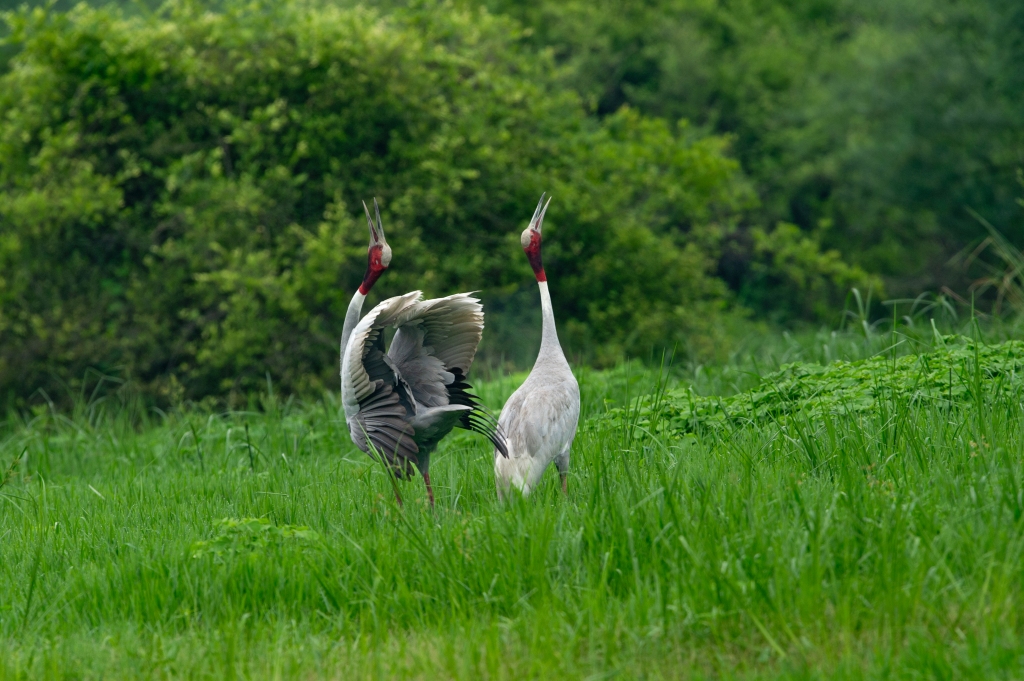
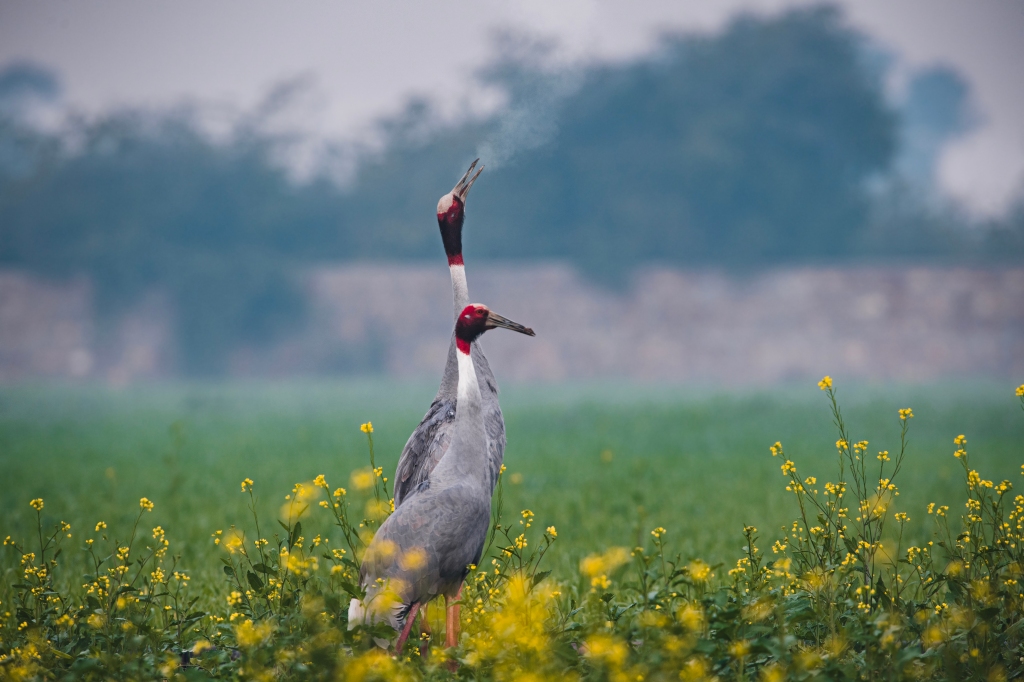
The Sarus crane is the tallest flying bird in the world standing 6 feet tall with a wingspan of around 8 feet. The name Sarus came from the Sanskrit term “sarasa” which means “bird of the lake”. All through the ages, Sarus have been honoured as symbols of love and devotion. Across many cultures, people have regarded Sarus with awe and respect.
The Sarus cranes are regarded to be symbols of love and devotion they are believed to pair for life and if one of the pair were to die, then the other starves itself to death by refusing any food or water.
As they are considered to be symbols of longevity of marriages in some parts of UP and Rajasthan newly married couples are gifted a pair of Sarus crane dolls to be kept at home and also there is a tradition of making a newly-wed couple view a Sarus pair immediately after the marriage ceremony.
Some tribes like the Gondi people consider Sarus cranes as sacred and killing or consumption of its meat is considered taboo.
The sarus crane has a special place in Buddhism and there is a story associated with it As the legend goes, Young prince Siddharth cared and nursed an injured Sarus back to health.
It’s this story that is one of the reasons why the bird has always had a deep meaning for Buddhists . Nepal has a Sarus sanctuary at Lumbini the birth place of Buddha.
Not just in Nepal but in a few other south east Asian counties the Sarus is revered. In Vietnam, it’s believed that seeing a crane before a journey or beginning work is auspicious and a sign of good luck – whereas killing one or eating its eggs will lead to misfortune in life.
In Myanmar, where it’s estimated there are about 500 sarus cranes, the majority of them live around the Ayeyarwaddy where they are protected because of a religious beliefs.
In India we find the Sarus cranes mainly in the states of UP & Rajasthan and in some places in Maharashtra. I have photographed these birds mainly in Bharatpur in Rajasthan and near Mathura in UP.
I have over the years captured these elegant birds in various seasons and in various moods.
The Cummunity Dwellers
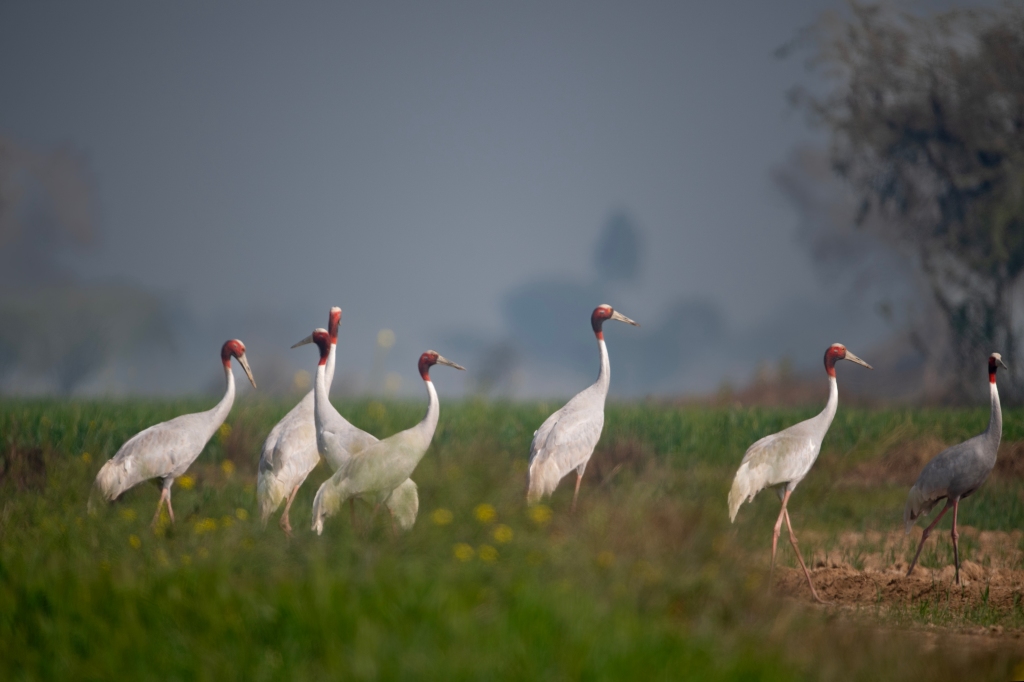


The Wooer
This was a male Sarus who was trying to impress his partner by gifting her a shiny snail.
He finds a snail
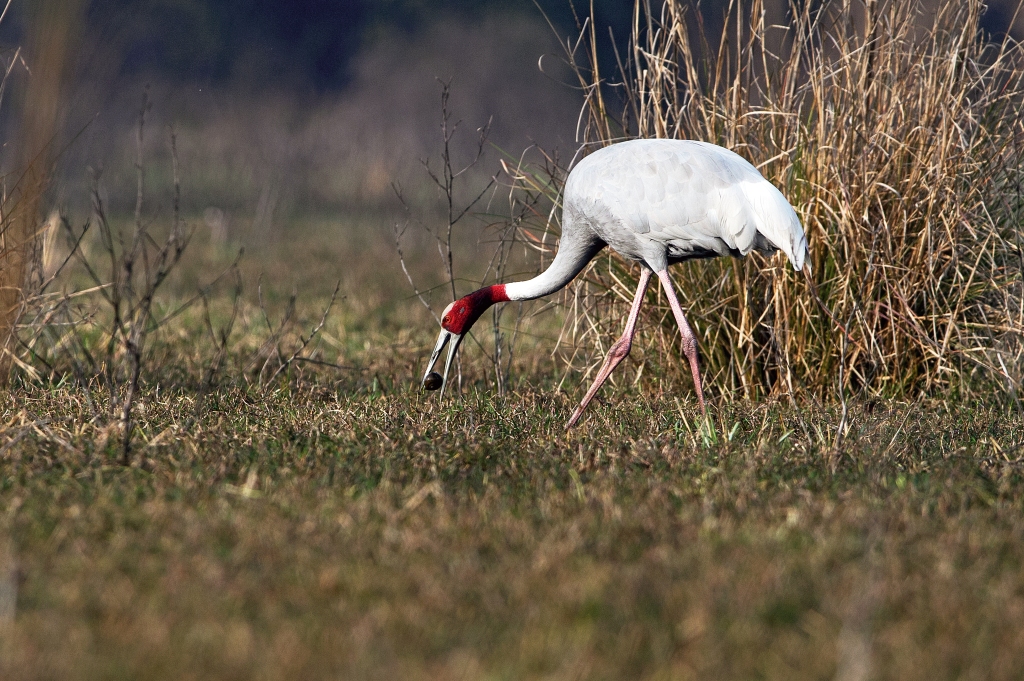
Brings it his Partner

Offers it to her

She accepts the gift

She swallows the gift can see it in her throat
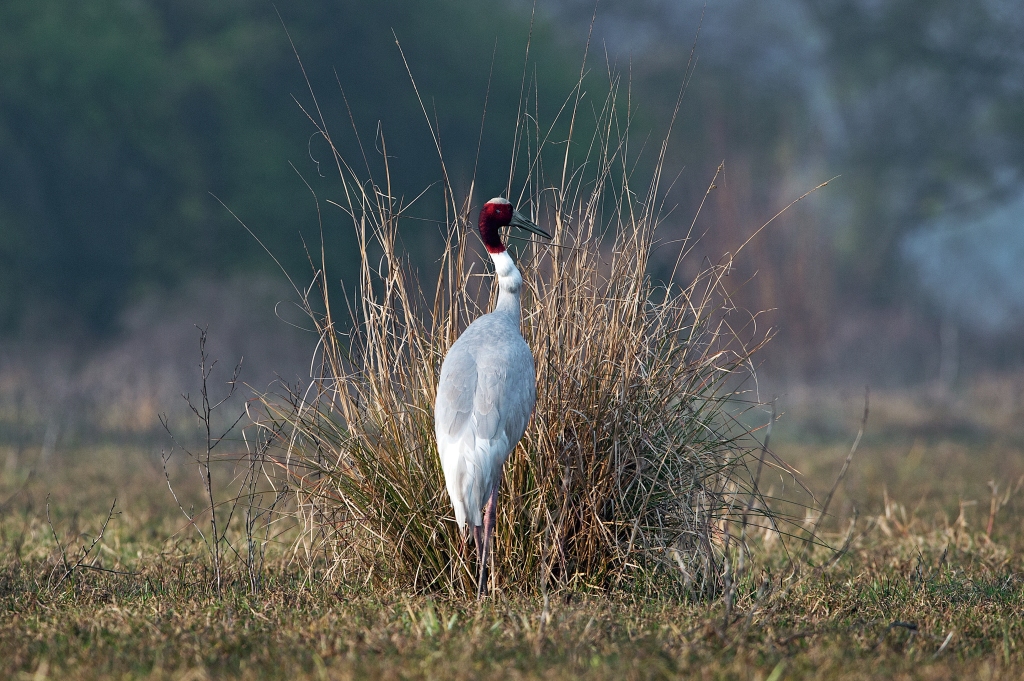
They celebrate by trumpeting

The mating ritual consists of loud trumpeting calls accompanied by elaborate dance moves.

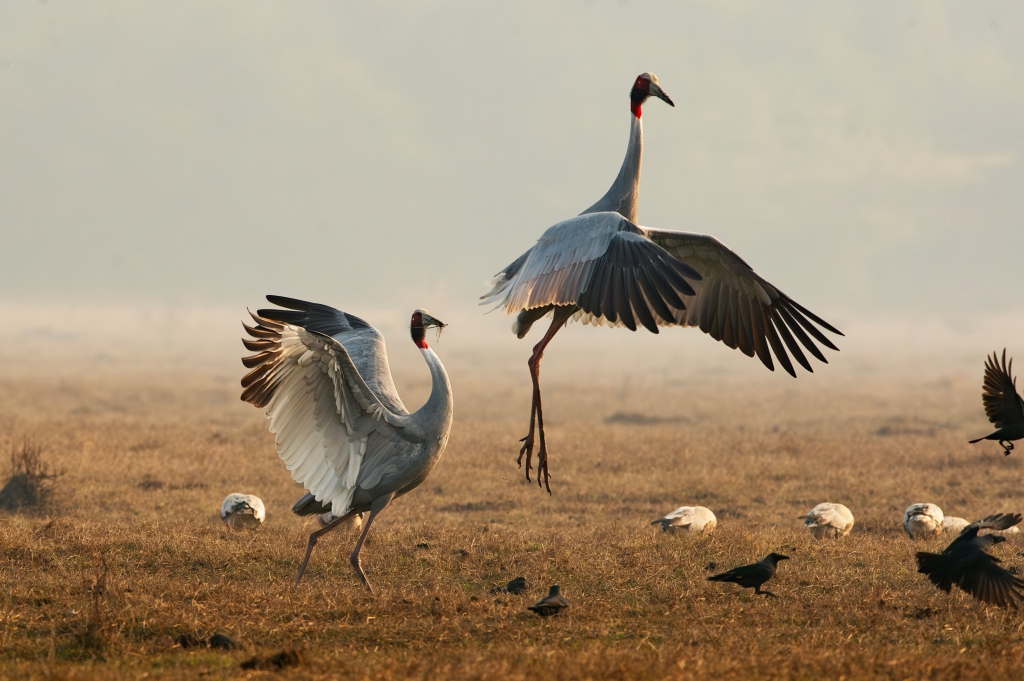


The Territory Defender
A pair of Sarus trumpeting to let another pair overflying their Territory know that this place is taken

Nest Defender
A Sarus defending its nest from unwanted intruders like Dogs

The Loving and tender parent
The Sarus builds its nest in a field or in water bodies and lays at most 2 eggs that takes around 30 days to hatch. the gap between the hatching of the eggs is 24 hours.
A sarus incubating its eggs

The Sarus chicks are born with their eyes open (Precocial) and can walk as soon as they are dry. once they are dry the parents lead them into the grass for feeding.
one chick is born and the mother is incubating the second egg.

A sarus pair with its newly born chick and egg

A sarus family-2 juveniles
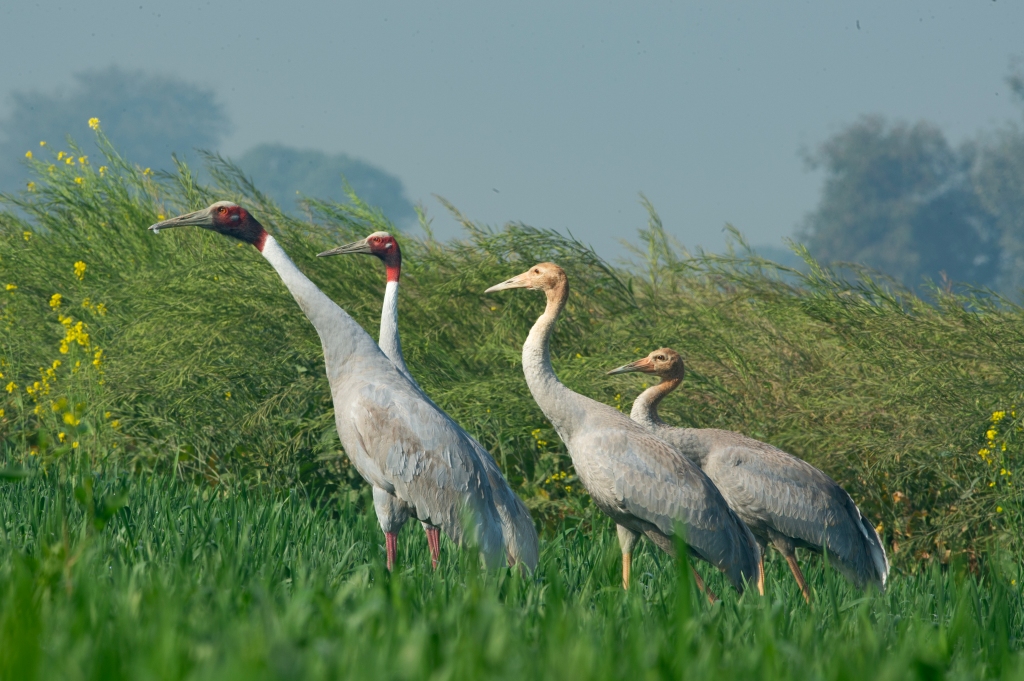



Comments